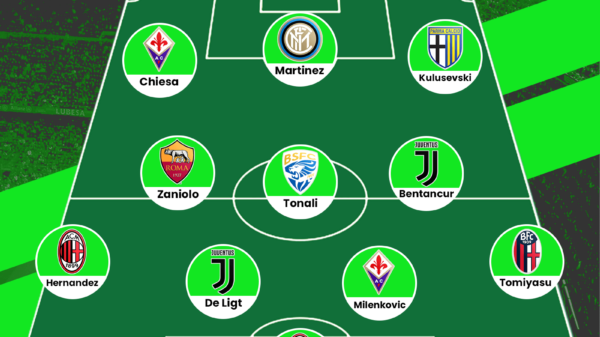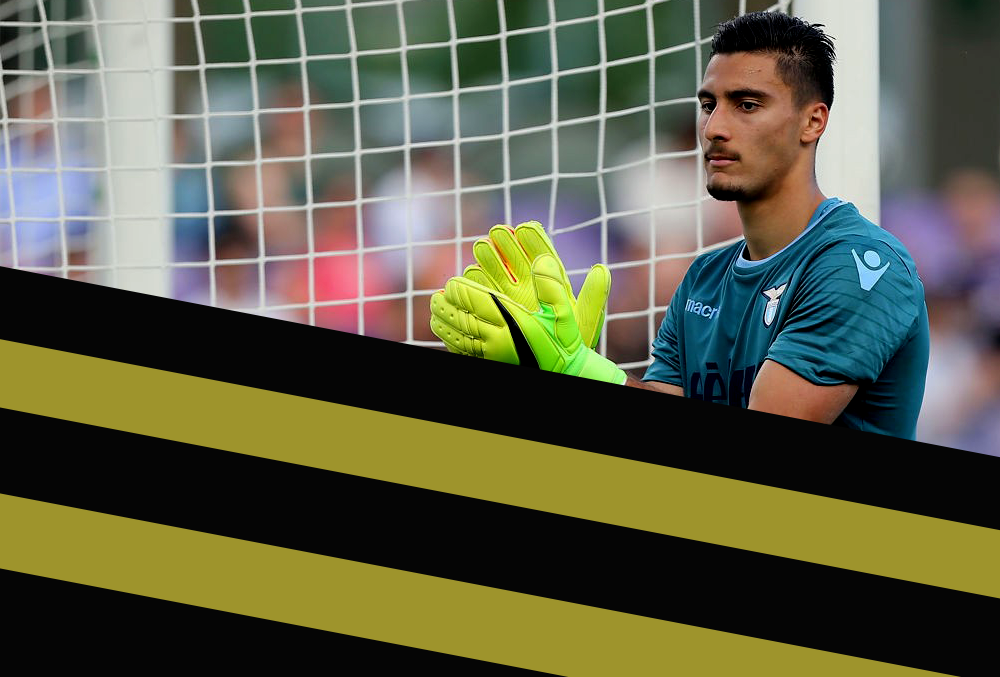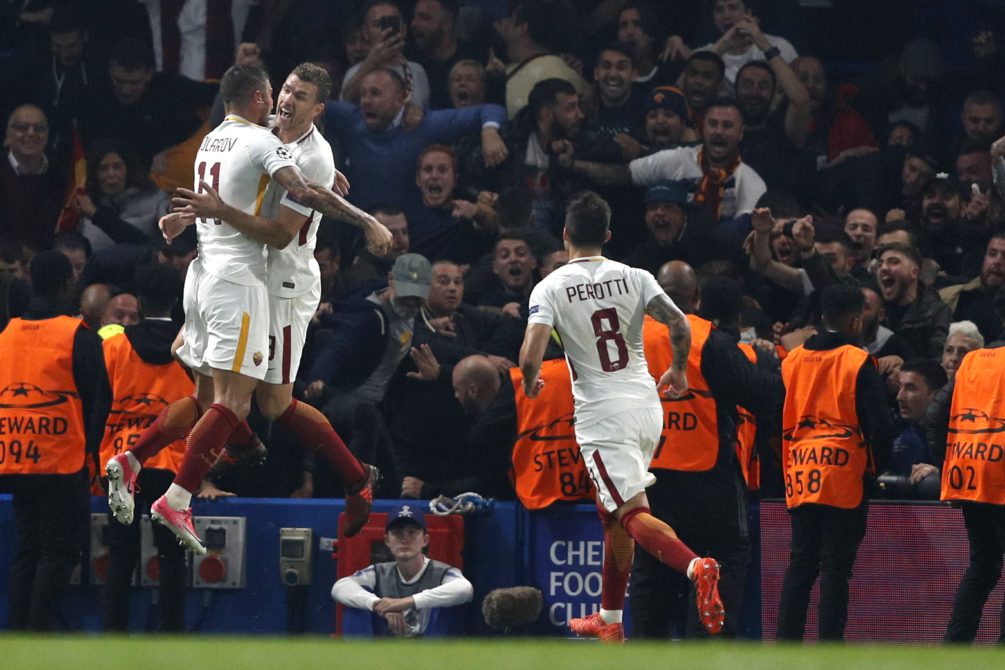Charles Onwuakpa writes a detailed tactical analysis on the Coppa Italia semi final second leg that ended Roma 3-2 Lazio.
Tuesday night added more drama and heartbreak to Roma’s 2016/2017 season, as the Giallorossi failed to turn around a 2-0 aggregate for Lazio in the first leg and were knocked out from the Coppa Italia semi final.
Despite a second half brace from Mohamed Salah, crucial goals from Ciro Immobile and Sergej Milinković-Savić (who had both scored in the first leg too) earned the Biancocelesti their third cup final in the last 5 years.
Luciano Spalletti opted for a 4-2-3-1 formation with Leandro Paredes replacing Daniele De Rossi (on the bench due to a knock v Netherlands) in centre midfield.
Stephan El Shaarawy won the ballot with Diego Perotti for the left wing role while Juan Jesus replaced Fazio in Roma’s back four.
Simone Inzaghi instead made only one change to the chosen starting XI for the first leg. Senad Lulić replaced Marco Parolo (suspended) in midfield while Felipe Anderson partnered with Ciro Immobile in their usual 3-5-2 formation.
Line Ups
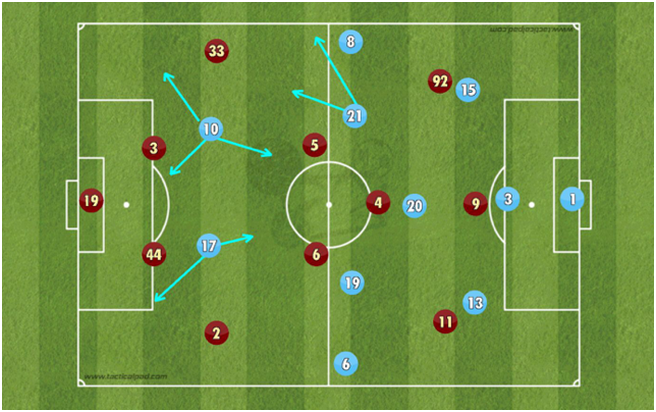
Made using TacticalPad
Roma (4-2-3-1): Allison // Rüdiger, Manolas, Juan Jesus, Emerson // Paredes, Strootman // Salah, Nainggolan, El Shaarawy // Džeko.
Lazio (3-5-2): Strakosha // Bastos, De Vrij, Wallace // Basta, Milinković-Savić, Biglia, Lulić, Lukaku // Felipe Anderson, Immobile.
Roma seek ball possession
Unsurprisingly, Roma were seeking ball possession to create chances and score goals right from the start.
In this image taken from the 1st minute, we can see how Roma’s attacking players force Strakosha to play long passes, mainly toward Immobile at first. This allowed Roma’s defenders to easily recover the ball, as the Biancocelesti striker isn’t very good in aerial duels.
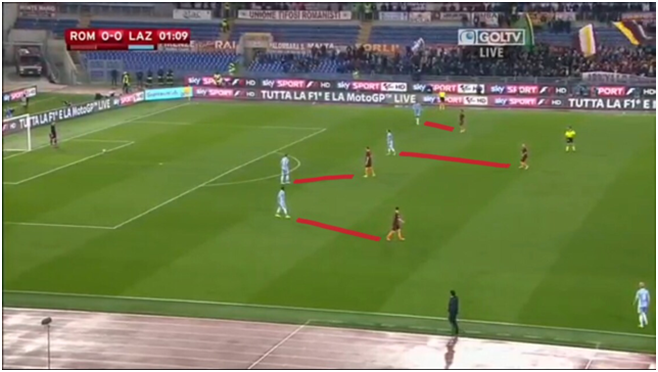
Lazio’s defensive block
Roma’s build up from the back was mainly sideways and the best area for them to advance was through the wings, especially on the right side with Rüdiger.
It was no secret that they tried to play long passes towards Salah, but Wallace and Lukaku behaved very well and coped with the Egyptian’s pace.
Lazio settled down with a 5-3-2 defensive block and mainly focused on cover-shadowing passes between defence and midfield, as we can see in this image taken from the 1st minute.
Immobile and Felipe Anderson are cover-shadowing Paredes, so are Milinković and Lulić doing with Nainggolan and Strootman, forcing Roma to play wide.
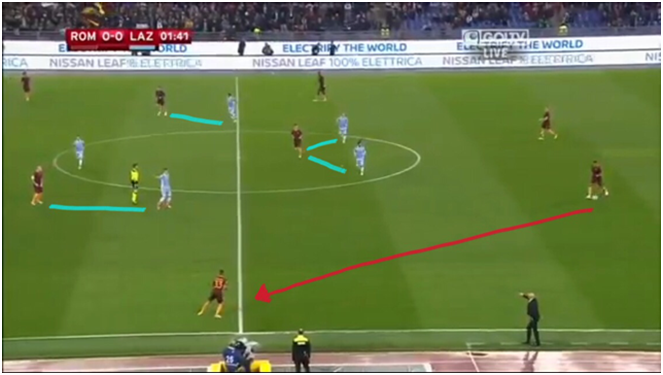
Lazio’s compactness
Lazio’s compactness in their own half was also key to their successful gameplan: cover-shadowing central receivers’ positions allowed them to make it difficult for Nainggolan to play between the lines, as the Belgian was forced to drop deep to receive the pass. Roma had problems in connecting their midfield and attack and mainly created chances through crosses, although this was a highly ineffective approach because Džeko, Salah, and El Shaarawy were outnumbered in most situations (4 v 3 with Lukaku staying deeper) and couldn’t find space behind the defensive line due to how deep Lazio played.
In this image below, we can see how Lazio’s compact 5-3-2 allows them to be well positioned in defending Emerson’s eventual cross. There was rarely enough width in Roma’s attacking play to worry the Biancocelesti.
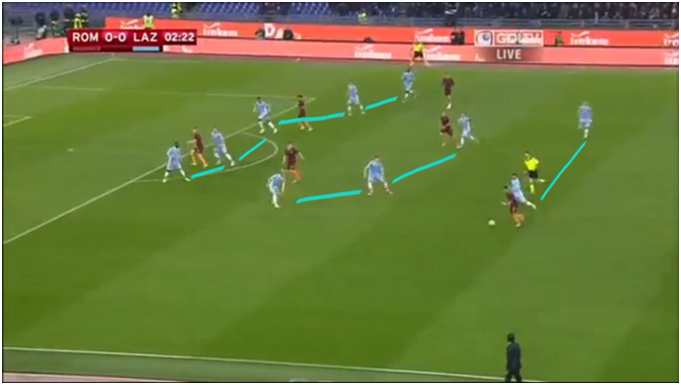
Lazio’s defensive approach also made counterattacks and attacking transitions more effective.
Roma were forced to score, and therefore had a very high defensive line: the ideal situation if you have Anderson’s pace to use on fast breaks, such as in this image below taken from the 32nd minute.
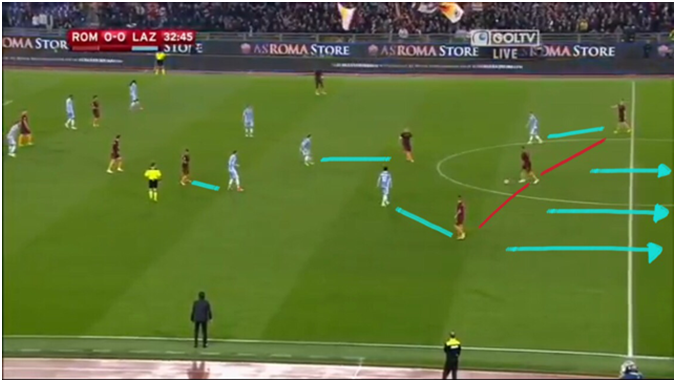
Milinković-Savić’s key role
Later on in the game, Lazio started to use Milinković-Savić as a targetman for their long balls.
The Serbian isn’t very dynamic or quick, but he is excellent in the air, can link up play very well and also defend the ball, combining with Felipe Anderson and Basta on a couple of occasions, as well as drift wide to receive the ball unmarked. He was also very clinical on the penalty spot as he intelligently scored from Immobile’s rebound to put Lazio ahead and provided a quality assist for the Italian in the second half.
Roma score but are still exposed on the counterattack
El Shaarawy’s equaliser after a poor clearance from De Vrij towards half time gave the Giallorossi a little bit of hope. Spalletti eventually sent on Bruno Peres to add more width to the home side’s attacking play. But the price to pay was high: not only did Roma concede a second goal, they were also exposed to 3v3 situations too many times as Lazio were happy to play on the counterattack. Mohamed Salah eventually got a brace after an easy tap-in in front of goal and punishing Strakosha’s poor save, but Roma still had a mountain to climb as they were 4-2 down to aggregate. Their gameplan didn’t change and they continued crossing, despite always being in numerical inferiority. Poor receiving positions in the centre too made it easy for Biglia and Felipe Anderson-who had a hell of a game-to intercept the passes.
Conclusion
In the end, the “Derby della Capitale” was a very exciting encounter as Lazio secured a spot in the final due to be held at the Stadio Olimpico later on in May. It was a disappointing night for Roma and Spalletti, who had bonded his stay at the club with an eventual win and could now leave the Giallorossi this summer. The home side now have to hope for a Juventus slump in the league to revive their Scudetto ambitions.
Read all our tactical analyses here




















































